http://www.vanityfair.com/politics/features/2006/08/norad200608?printable=true¤tPage=all
Read this article and see for yourself how FAA and NORAD NEADS personnel seemed to be in the dark about the location of Flights 11 and 175 throughout the morning of 9/11, and were getting their information from CNN.
Then read these two excerpts, and listen to the tapes which are linked from the Vanity Fair article:
BEGINNING OF EXCERPT 1:
In the background, however, you can make out the sound of Jeremy Powell, then 31, a burly, amiable technical sergeant, fielding the phone call that will be the military's first notification that something is wrong. On the line is Boston Center, the civilian air-traffic-control facility that handles that region's high-flying airliners.
08:37:52
BOSTON CENTER: Hi. Boston Center T.M.U. [Traffic Management Unit], we have a problem here. We have a hijacked aircraft headed towards New York, and we need you guys to, we need someone to scramble some F-16s or something up there, help us out.
POWELL: Is this real-world or exercise?
BOSTON CENTER: No, this is not an exercise, not a test.
http://www.vanityfair.com/mp3/politics/083752.mp3
Powell's question—"Is this real-world or exercise?"—is heard nearly verbatim over and over on the tapes as troops funnel onto the ops floor and are briefed about the hijacking. Powell, like almost everyone in the room, first assumes the phone call is from the simulations team on hand to send "inputs"—simulated scenarios—into play for the day's training exercise.
Boston's request for fighter jets is not as prescient as it might seem. Standard hijack protocol calls for fighters to be launched—"scrambled"—merely to establish a presence in the air. The pilots are trained to trail the hijacked plane at a distance of about five miles, out of sight, following it until, presumably, it lands. If necessary, they can show themselves, flying up close to establish visual contact, and, if the situation demands, maneuver to force the plane to land.
At this point, certainly, the notion of actually firing anything at a passenger jet hasn't crossed anyone's mind.
In the ID section, the women overhear the word "hijack" and react, innocently enough, as anyone might with news of something exciting going on at work:
08:37:56
WATSON: What?
DOOLEY: Whoa!
WATSON: What was that?
ROUNTREE: Is that real-world?
DOOLEY: Real-world hijack.
WATSON: Cool!
http://www.vanityfair.com/mp3/politics/083756.mp3
BEGINNING OF EXCERPT 2
On the ops floor, there is considerable confusion as to whether the second hijacking New York Center just called in is the same plane that hit the second tower, or whether there are now three missing planes.
09:03:52
NASYPANY (to Marr): Sir, we got—we've got unconfirmed second hit from another aircraft. Fighters are south of—just south of Long Island, sir. Right now. Fighters are south of Long Island.
There's seemingly enough commotion in the Battle Cab that Nasypany needs to clarify: "Our fighters … " The two F-15s, scrambled from Otis, are now approaching the city.
In the background, several troops can be heard trying to make sense of what's happening.
09:04:50
—Is this explosion part of that that we're lookin' at now on TV?
—Yes.
—Jesus …
—And there's a possible second hijack also—a United Airlines …
—Two planes?…
—Get the fuck out …
—I think this is a damn input, to be honest.
http://www.vanityfair.com/mp3/politics/090450.mp3
The last line—"I think this is a damn input"—is a reference to the exercise, meaning a simulations input. It's either gallows humor or wishful thinking. From the tape, it's hard to tell.

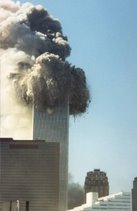

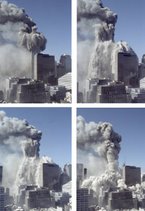

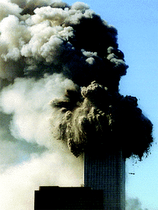

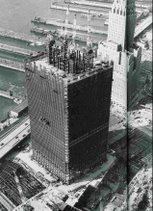
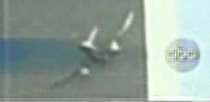
No comments:
Post a Comment